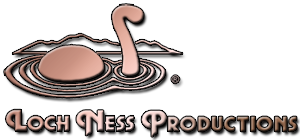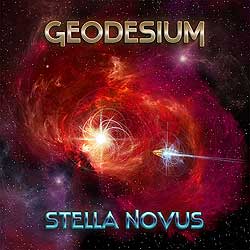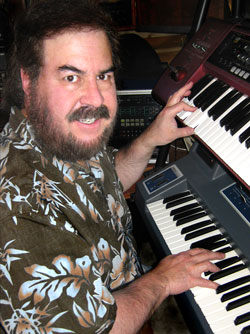Geodesium Stella Novus
Deeper and deeper into space music!
If the album Music from SpacePark360, is a Geodesium "walk on the wild side", Stella Novus could qualify as a return to the familiar path of planetarium space music. It builds on the solid Geodesium tradition of taking listeners to places they've never been, opening their hearts and minds to the possibilities of the cosmos through aural voyaging.
It also follows the practice of showcasing the planetarium show soundtrack music that Mark C. Petersen is best known for. Eight of the ten tracks feature music first recorded for the Loch Ness Productions show HUBBLE Vision.
Phases of Phaedra offers the beautiful cello lead lines reminiscent of Winter's Return and On To Orion, from West of the Galaxy. This is the sort of music that Laura Kyro, former show producer from the St. Louis Science Center's McDonnell Planetarium (and for whom Mark did quite a few soundtracks in the 1980s), called "cosmic slow dancing". Its gentle motion is the perfect way to send your soul echoing across cosmic distances.
Planetary Passages is the aural equivalent of the planetarium show favorite: the tour of the planets. Indeed, it's the music from HUBBLE Vision's solar system section. We pass by the Moon and Venus before moving on to Mars, sonically represented by the "fourths" analog patch from the Prophet-5. Turbulent Jupiter is notated low string tremolandi. Saturn, glittering with its icy rings, is evoked by high strings sounds, and the outer planets finish off the piece with sweeping sounds to bring their chilly majesty to mind.
Protostars are the newborns of the stellar community, hidden inside clouds of gas and dust. Yet we know their light will eventually shine through, announcing the new stars to the universe. Their music here is sparkly and shiny, hinting at the radiance to come.
Deep Fields speaks of the immenseness of cosmic distances, the vastness of the cosmos, and the countless galaxies we see in every direction. The universe is a majestic thing to behold, and its musical portrayal is equally elegant.
Starbirth Reverie is radiant, positive and energetic, depicting the infants of the cosmos — newborn stars spouting gas jets, sculpting out hollows from the interstellar gas clouds in which they form. And, Mark pays tribute to Isao Tomita with the "whistler" synth patch that appeared in many of his recordings.
Light Echoes may be Mark's favorite track on the album. It speaks to the depths of space, and some of the bizarre objects in it. It starts with the glowing rings surrounding Supernova 1987a. The sweeping bass octave glissandi accompany the section of the Hubble show about Eta Carina, the bloated star that may become a supernova before long. In the show, we also feature the deaths of stars as planetary nebulae — a "gallery of doom" that shows us the unearthly beauty of stars in their death throes. The relentless, clangorous chimes are like church bells tolling a funerary procession.
Carolyn's Galaxy is simply designed to describe beauty in the cosmos — from the elegant majesty of a spiral galaxy to Mark's particular and special inspiration, his lovely wife Carolyn. They were married in a planetarium, more than thirty years ago.
Cosmic Web uses space music to describe the vastness of the large-scale structure of the universe. This same piece has also been featured in a Mars Phoenix video that was popular during the successful NASA mission. Actually, several of these tracks have been heard in ViewSpace exhibit presentations from the Space Telescope Science Institute, which are shown in museums and science centers around the world.
Stella Novus has kind of a Jean-Michel Jarre Oxygene feel to it. The basic tracks were recorded during the sessions for the Seasonal STARGAZING project. While the music from that show eventually became the Geodesium album A Gentle Rain Of Starlight, this track didn't quite seem to fit with the style of the others, so it remained on the shelf. Then, Kevin Scott from Evans & Sutherland requested some music to accompany their Digistar 4 (planetarium projector) installations. So Mark revisited it, added some enhancements, and Stella Novus was the result. The Digistar theaters get the music in 5.1 surround, so go find one and request to hear it!
Note to Digistar users: At the time Kevin asked, we had not named the piece, so we said he could come up with one. He chose "Névêstanevóo'e", which refers to sacred persons of Sun, Moon and Stars in Native American cultures. We think Stella Novus may be easier to remember!
You've heard of a "director's cut" for motion pictures; Hubble Suite is a "composer's mix". It's an opportunity to present the planetarium show soundtrack music that Mark has done so much of over his career — in a way that it's never heard in the planetarium, without dialog or narration over it. This suite is the entire score for the Loch Ness Productions planetarium show HUBBLE Vision, mixed with an ear for the music, instead of staying out of the way of the voice track! The Loch Ness Productions style in soundtracks is that the music is an integral part of the story, not just any old background wallpaper. HUBBLE Vision's music is non-stop throughout the show, and that's what you get here — a chance to hear how the pieces were designed to flow together, in context with each other. We're glad to be able to provide this in an extended version; planetarium show soundtracks are the essence of what Geodesium is about, so you can experience this lovely space music in close to its original intended form — and maybe even a step better.




